I've previously showed pictures of Iowa's Main Battery Plot, and now it's time for the follow-up of the Secondary Battery Plot.
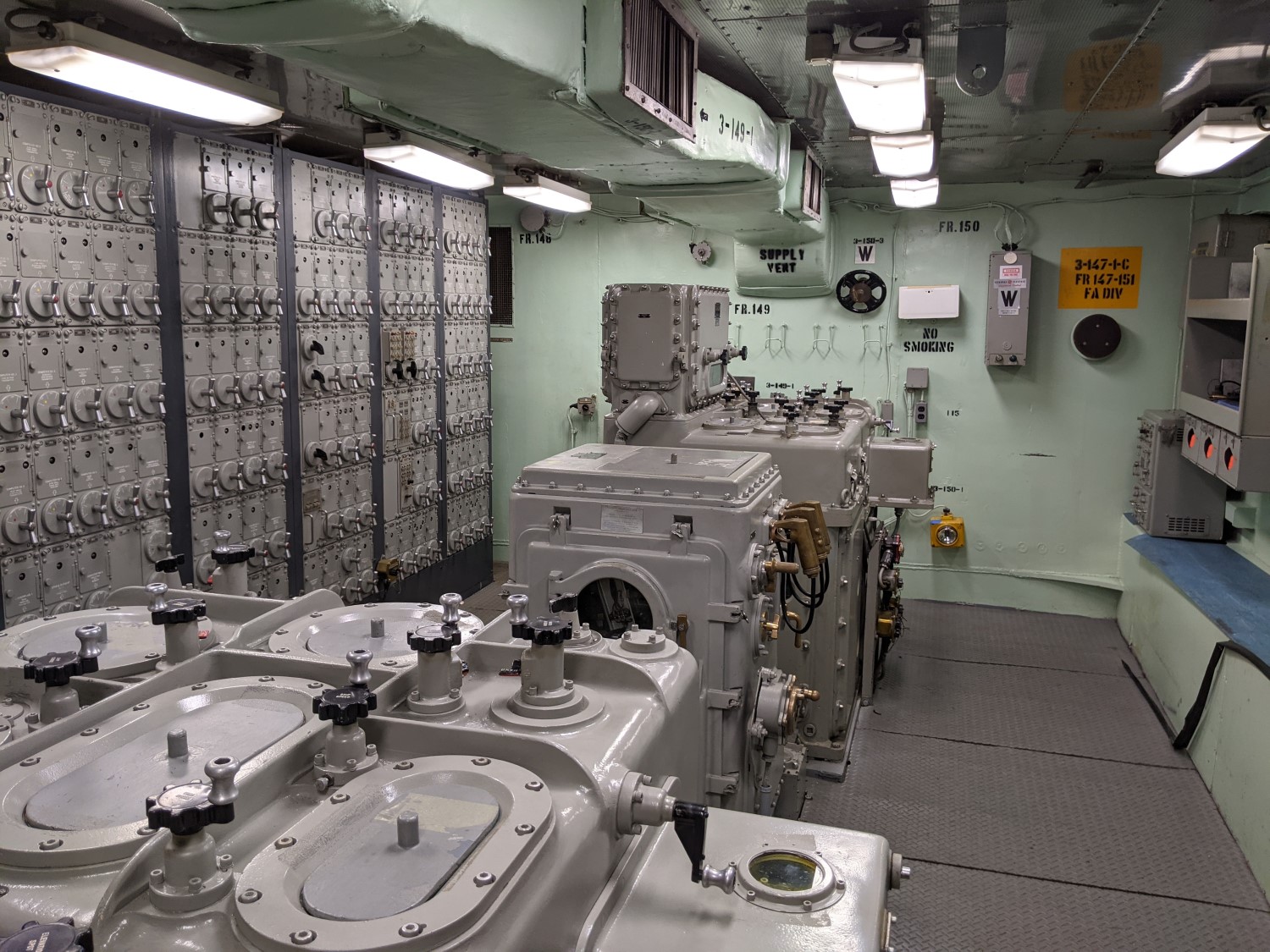
This space contains two Mk 1A computers along with their associated Stable Verticals, set up to control the 5" guns. This required dealing with targets that are both very fast and moving in 3D, a truly incredible achievement.
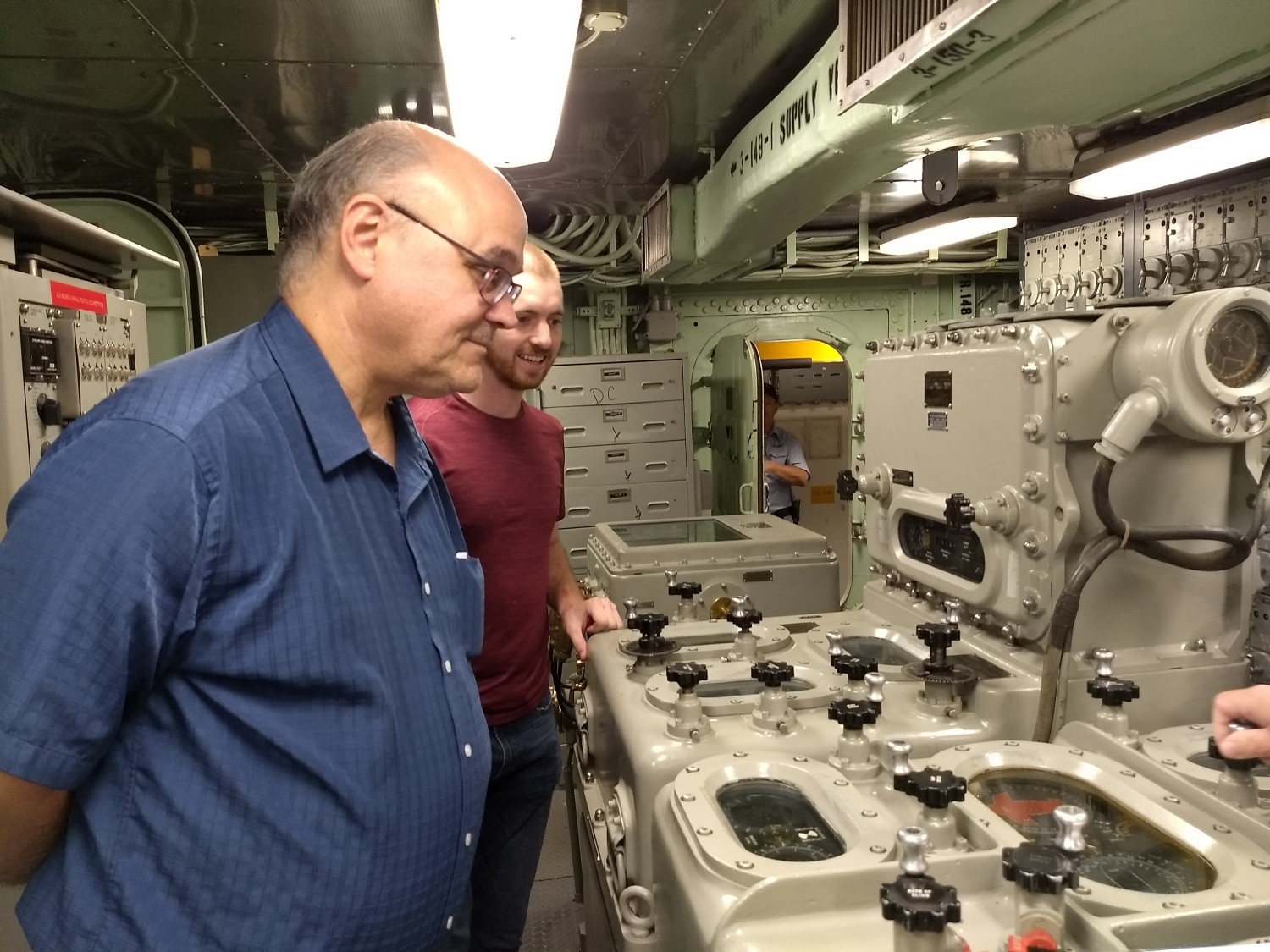
John Schilling inspects a Mk 1A
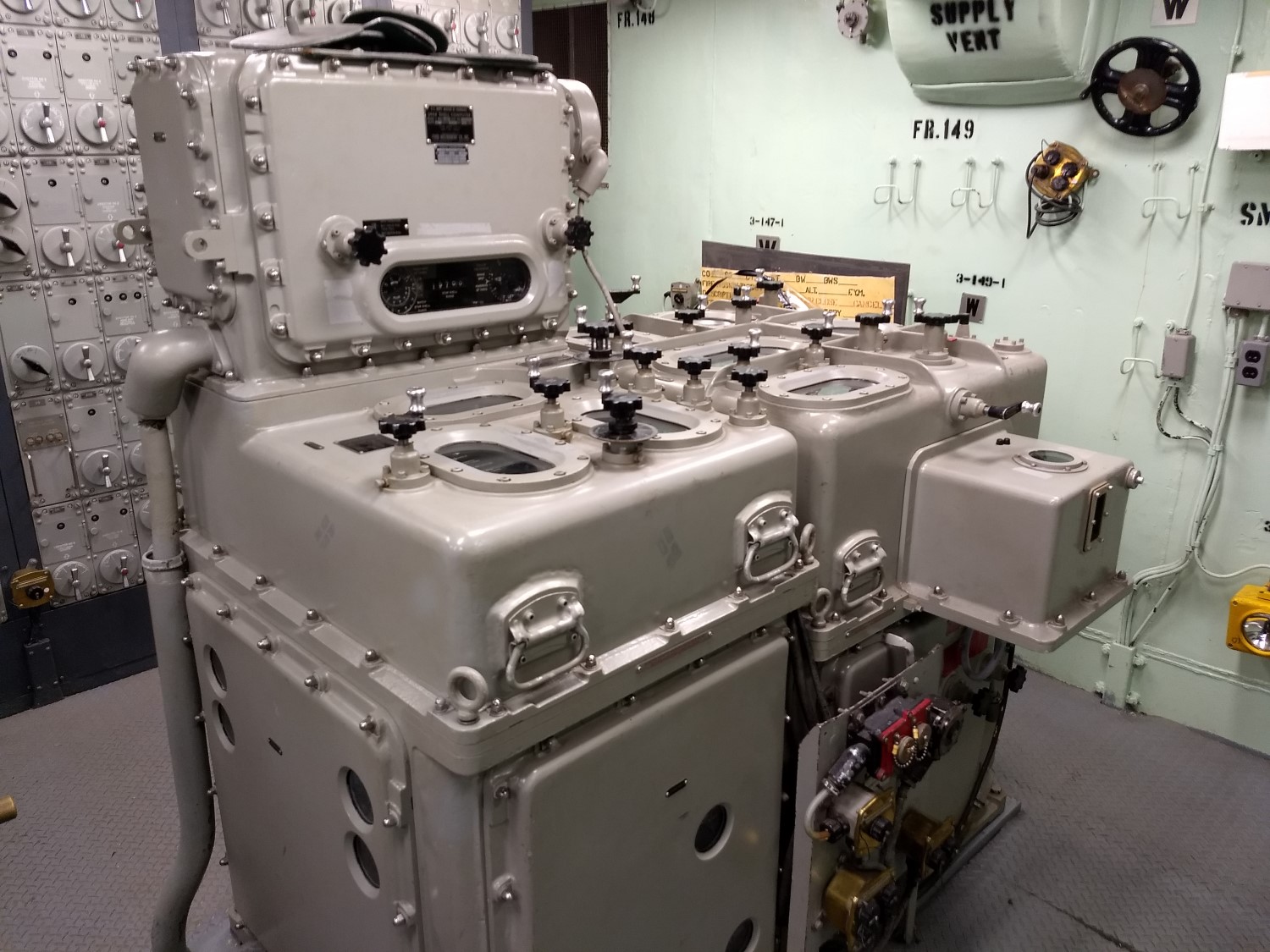
The box on top is a star-shell computer, to figure out where to fire star shells in a night action to best illuminate the target.
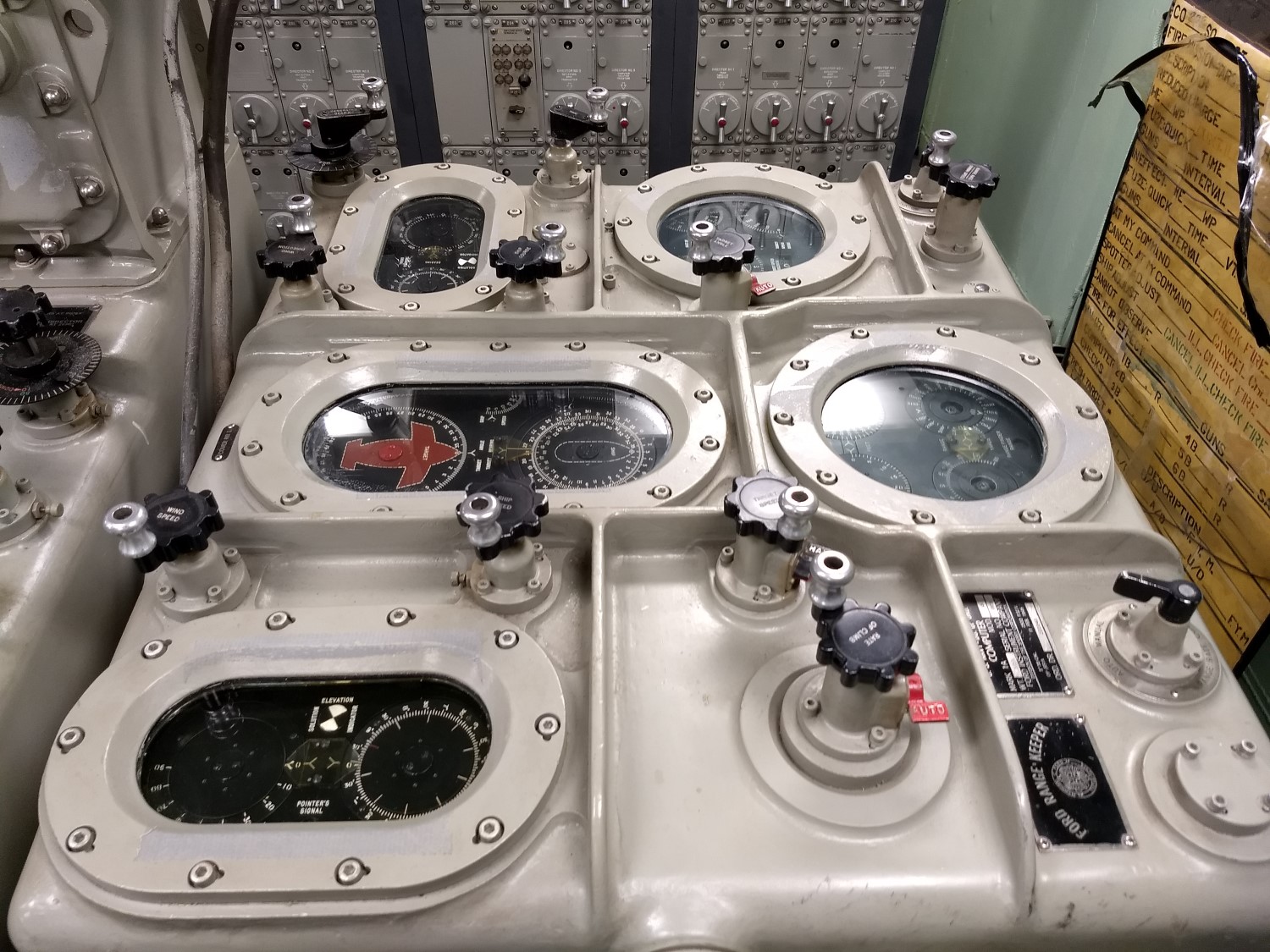
The top is similar to the Mk 8, but with more knobs because it has to handle a third dimension.
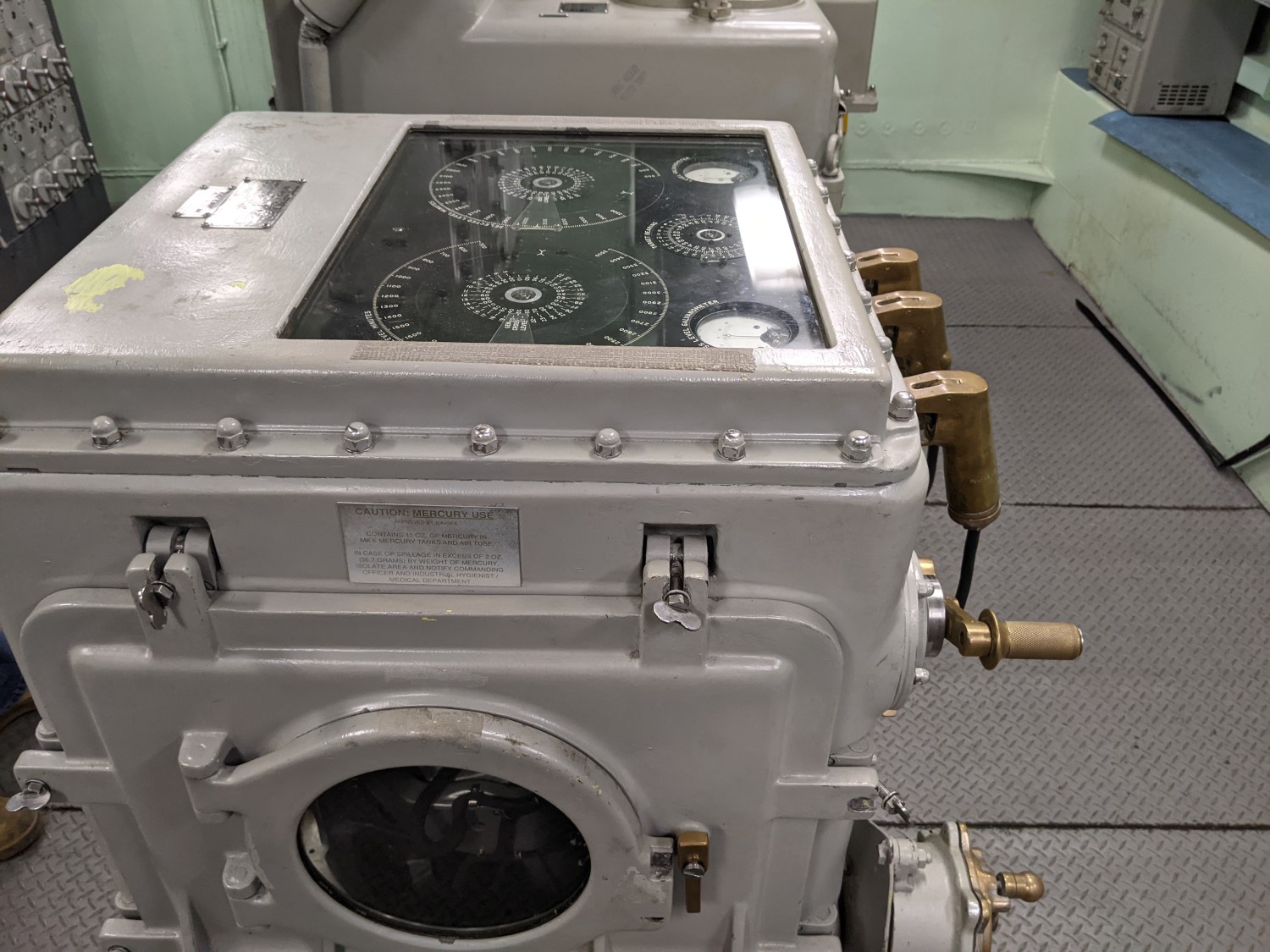
The Stable Vertical is outwardly similar, and I'm not sure if there's a huge difference internally.
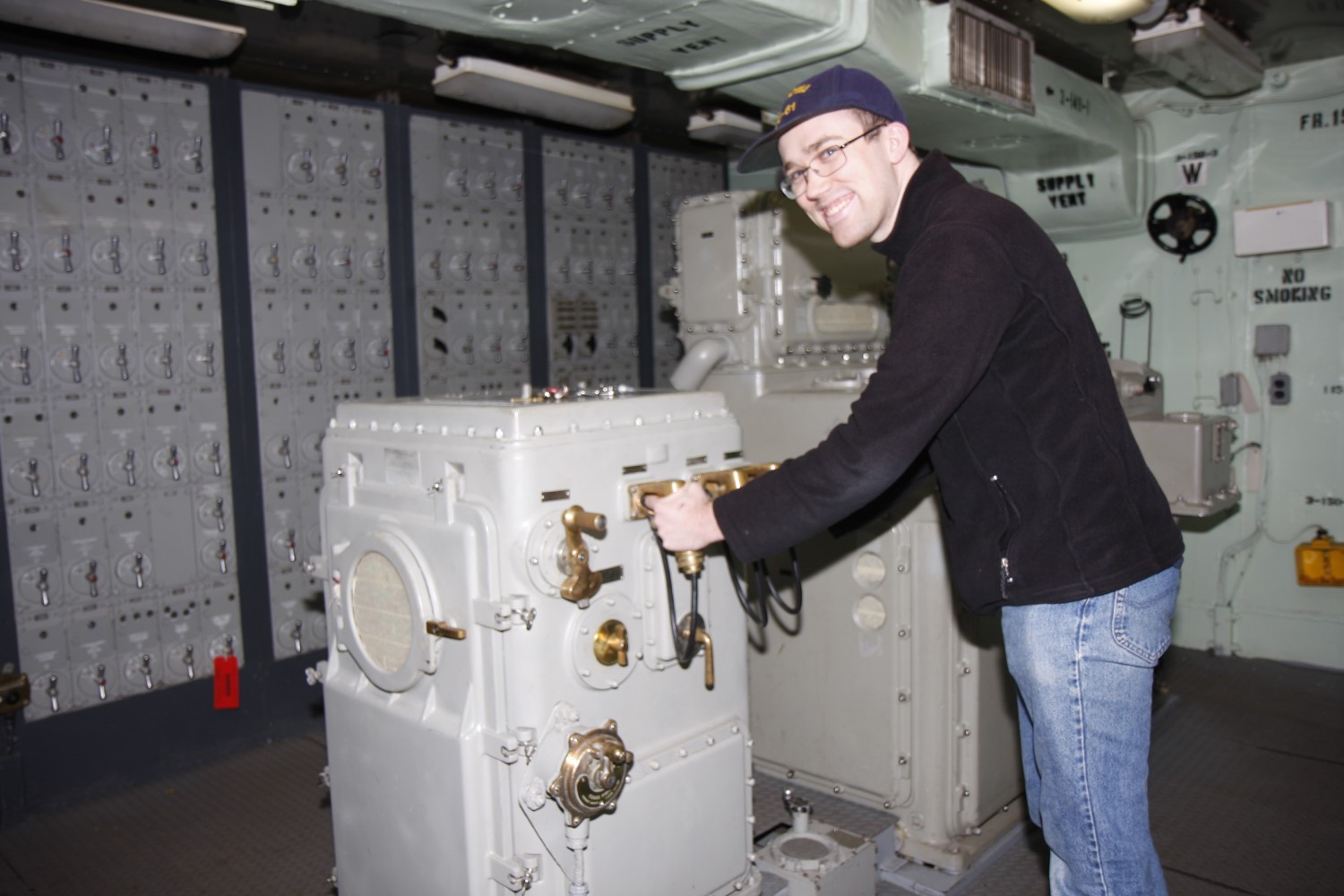
Me about to fire the 5" guns.
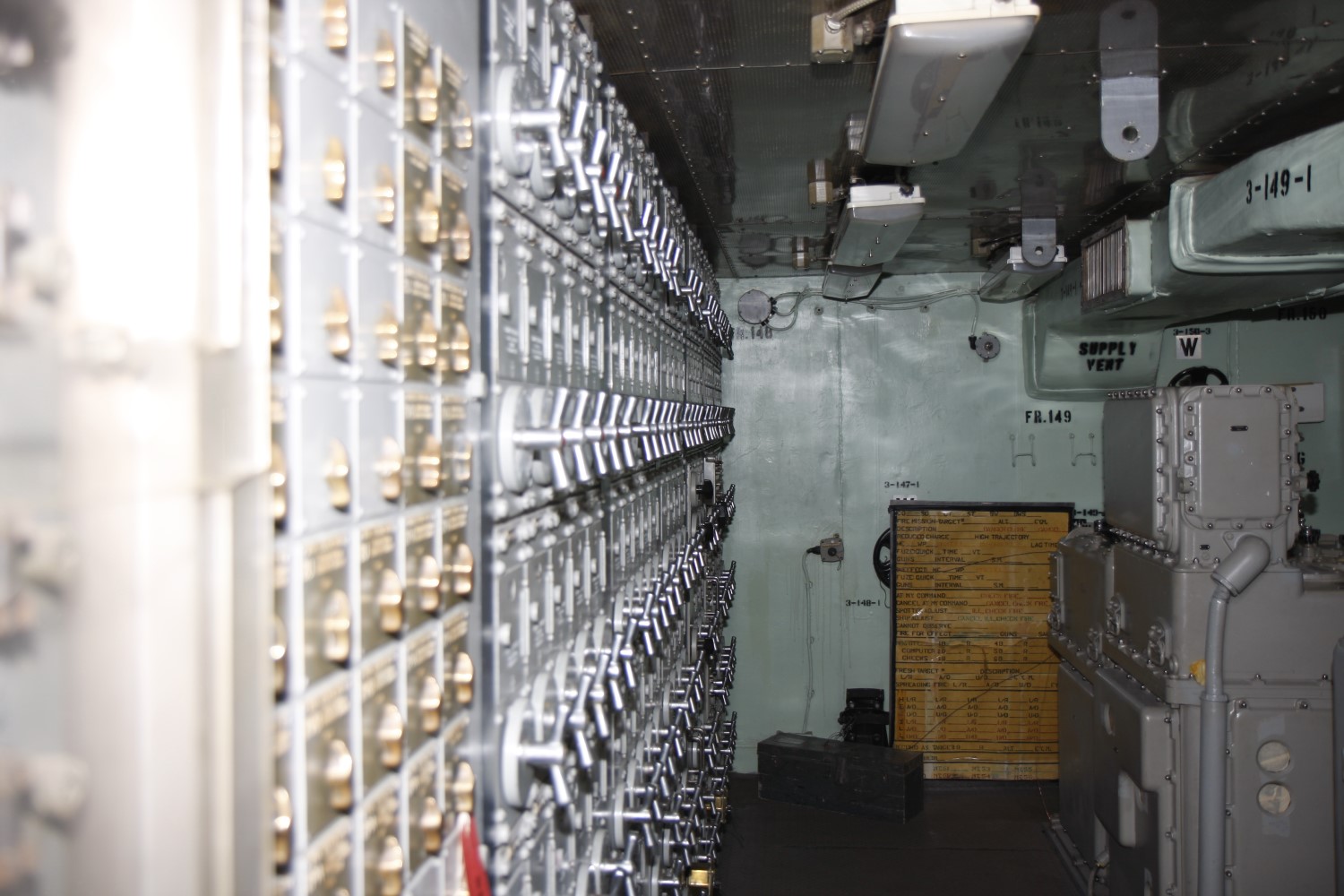
The switchboard, similar to the one for the main battery. There is ability to cross-connect secondary directors to main battery and vice versa.
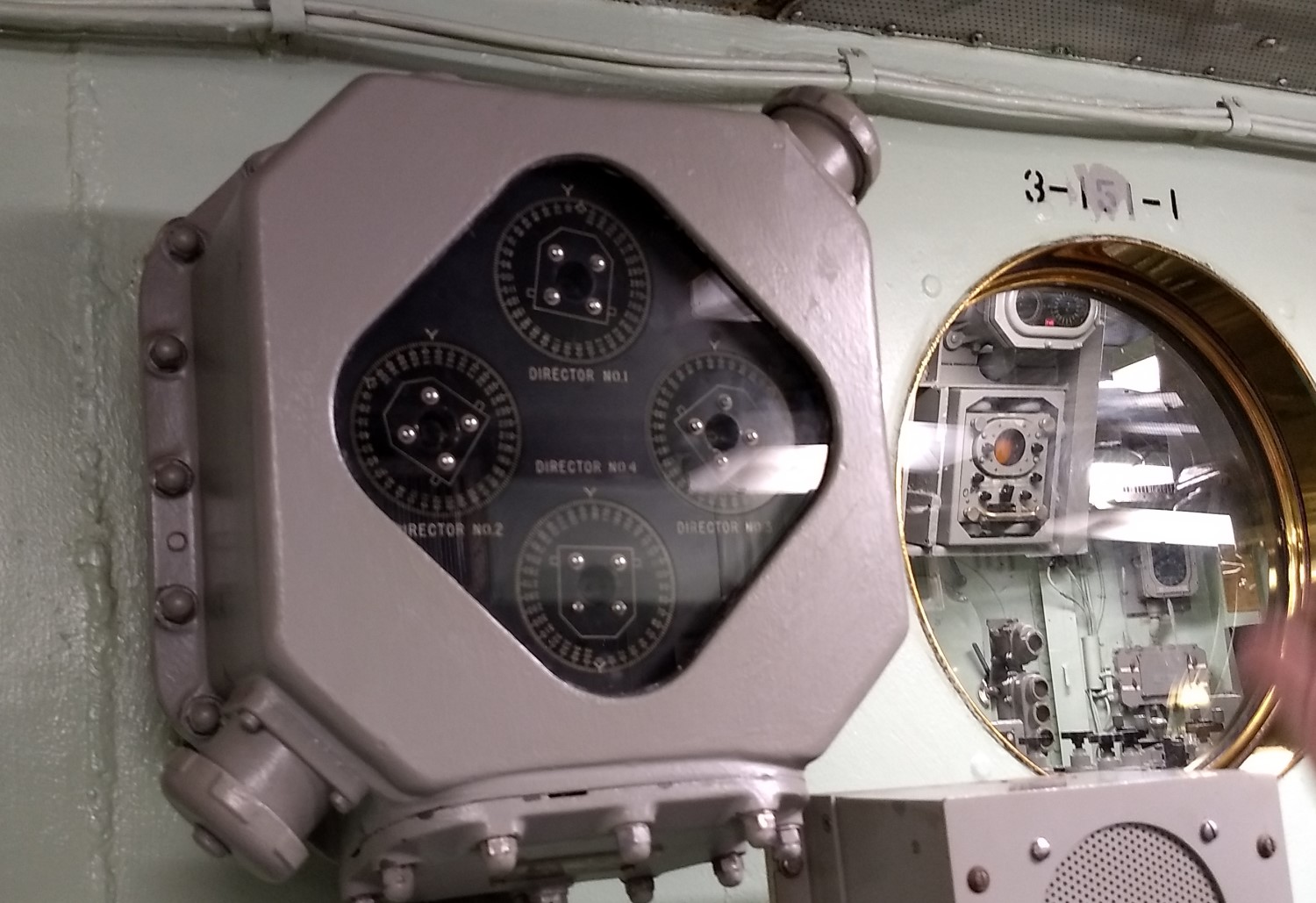
A train indicator for the secondary battery directors, so the plotting room team knows where they're looking. The porthole leads to the main battery plot.

Comments
Remember talking to the FTs about the solutions on the computer using NGFS (naval gun fire support). They said you got the best solutions when you set the ship's speed to 0 and the ground target's speed to whatever the ship's speed through the water was. Then adjusted in from there using a spotter.
At least that's what I THINK I remember. Been decades....
So the Iowa had 4 mk37s, and 4 Mark 1a computers split into two secondary plots. And each computer could be cross-connected to any mk37? And each 5" turret could also be assigned to any director within its field of fire?
What a tremendously flexible system, although I can imagine it'd be hard to juggle all that during a fleet battle.
In a battle they'd operate normally with no cross-connect unless they took damage that way they'd only have to juggle it if something was damaged.
In exercises they might cross-connect just to make sure it all works in case they need to do it.
@tim
Interesting. That's not unexpected, although it seems rather odd.
@echo
Most of the time they'd just set it up and probably not change anything beyond maybe which director/computer the 5" turrets were hooked up to. But yes, the switchboard is quite complicated, and I recall that they often had only one or two people who really knew it in the 80s.
I wonder if, had the Iowas hung around through the 1990s, they would have replaced the 5" fire control gear with the digital-computerized systems used on contemporary surface combatants? (Or maybe even have gotten Mk. 45 guns, simply to make the logistics easier?)
I'm not sure. I know that there were plans to replace the Mk 8 systems with digital computers, primarily so they could use more types of shells. I don't remember hearing anything about the Mk 1As from that source, and could see it going either way. On one hand, you can completely scrap the electromechanical systems, and you've presumably done the work to integrate the computer system with synchros and stuff. On the other, it is more money, and the main reason for the replacement was the aforementioned cam issue. As for replacing the 5"/38s, no chance. That's a big, big change, which wouldn't integrate well with the ships as built. The 5" magazines are way in the bowels of the ship, and you'd need to design an entirely new handling path for the new gun. Or limit magazine space to the handling room, which I don't think is feasible.
So the Iowas had 2-3 5" turrets for each director, while the Atlantas had 4? I really wish it was possible to read what actually using those was like in practice. Were directors assigned a field of fire? Did they overlap?
There's so many interesting questions that descriptions and images can't answer.
It varied somewhat during the war. Throughout most of it, directors were assigned targets by the air defense officer (or whatever he was called). The director crew themselves weren't picking targets because they were busy operating the director. This method didn't work as well against the kamikazes, which was about the point when they started hooking Mk 51 directors up to the 5" mounts, allowing much faster reactions.
@echo: Original 1944 and 1949 instructions. Roughly, hold the director sights on the target until they stay there on their own (meaning the system has correctly measured the target speed), then fire. (Though if you specifically care about how they decided who shoots at who, the references in the CIC article might be more relevant.)
@tim shatz: Physics only cares about relative motion (including relative to the air, but this system does have a wind setting), so you do have a choice of what to define as "at rest" and measure the own ship, target and wind velocities from. This system seems to be designed as "water at rest" (allowing the own ship velocity to be automatically set) and that's the 1950s textbook way to do shore bombardment (they explicitly note that if you're in a current, the speed of a ground target by this definition is not zero), but I don't know if it was actually used that way.